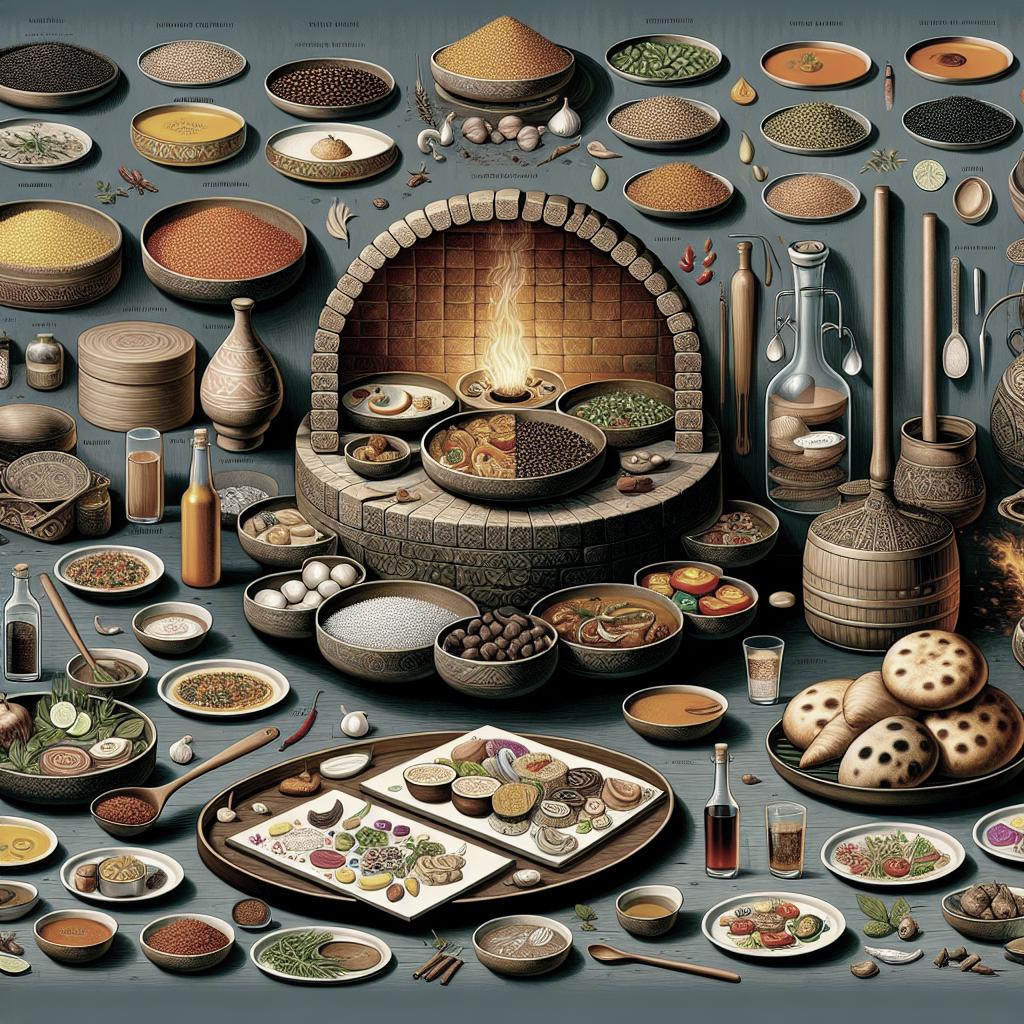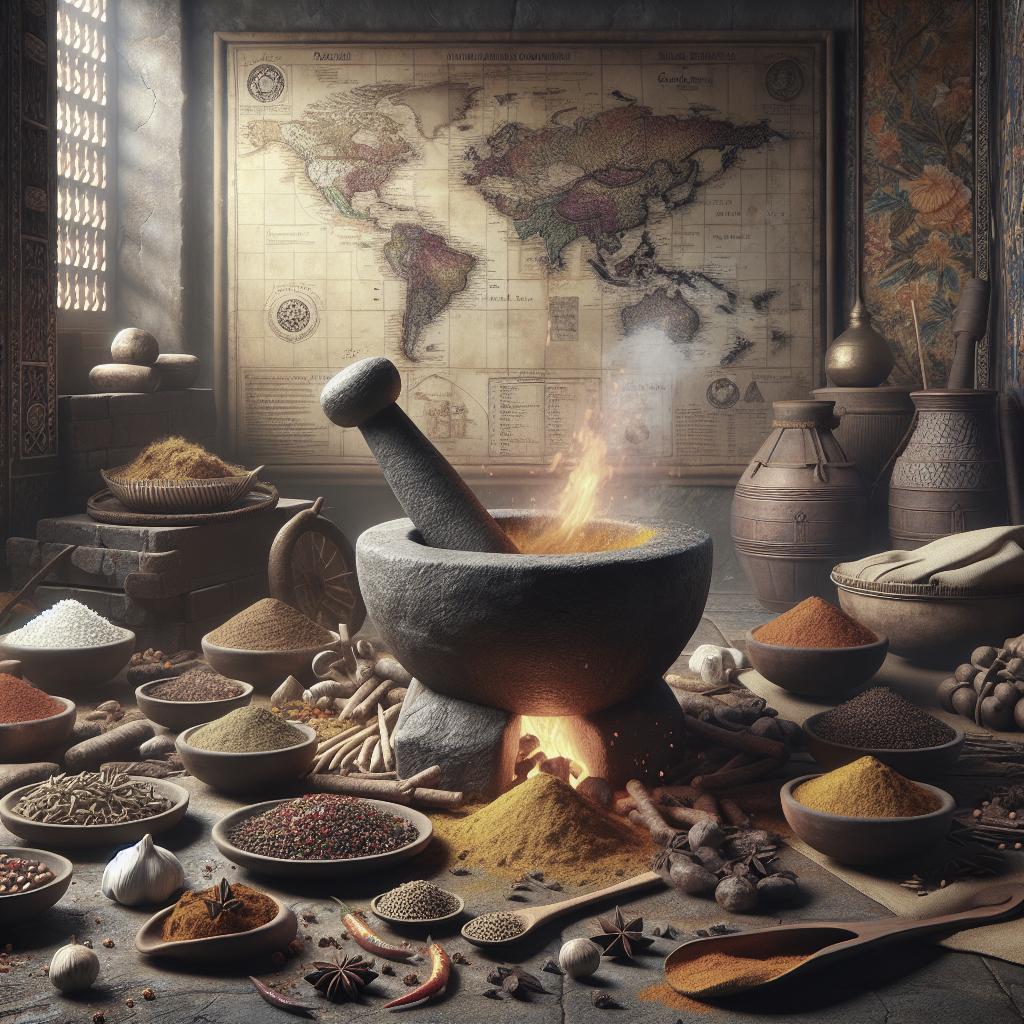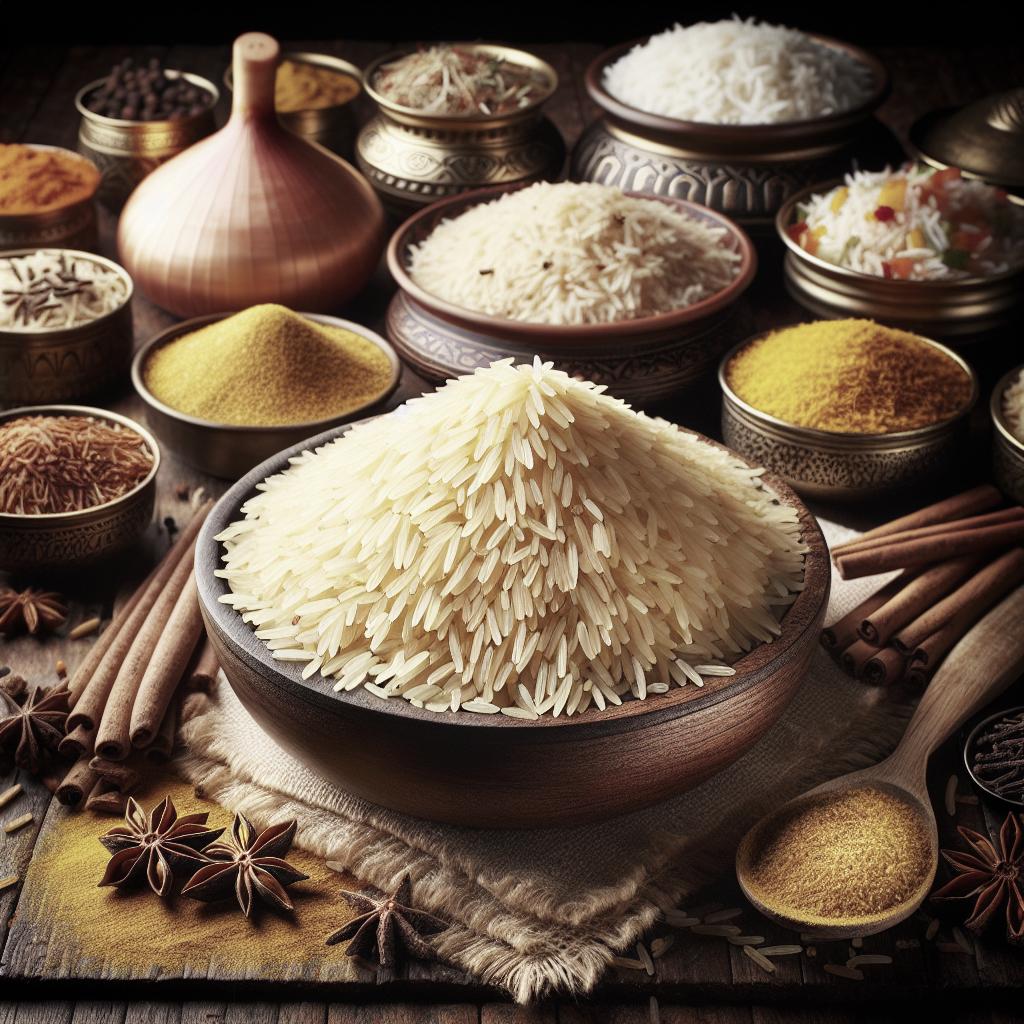“`html
Abstract
Indian cuisine, an amalgamation of regional flavors, traditions, and foreign influences, unfolds a rich culinary history that intertwines with the country’s cultural transformations. This article explores the evolution of Indian cuisine from its prehistoric roots through significant historical phases, such as the Vedic and Mughal eras, to the impact of European colonization. Understanding this evolution provides an insight into the diverse and dynamic spectrum of today’s Indian cuisine that continues to entice palates worldwide.
Introduction
The evolution of Indian cuisine is a narrative as diverse and complex as the country itself. From the prehistoric era’s simple dietary practices to the intricate recipes developed over the centuries, Indian cuisine is a testament to tradition, innovation, and the rich tapestry of cultural exchanges. This post delves into the rich history of Indian culinary arts, analyzing key eras that have distinctly shaped this gastronomic heritage. By examining ancient traditions, colonial influences, and culinary ingenuity, this article aims to unravel the essence of Indian food culture.
Methodology
The research for this article involves an extensive review of historical records, scholarly articles, and culinary texts to trace the timeline of Indian cuisine. By analyzing archaeological findings, ancient scripts, and colonial records, this study aims to map the influence of various eras and foreign interactions on Indian culinary practices. Moreover, this examination includes interviews with culinary historians and chefs to gain insights into traditional practices and contemporary interpretations.
Databases and archives, such as the Digital South Asian Library and The Food Timeline Library, provide access to a wide range of materials that document the evolution of food in India. A critical analysis of these sources highlights the transition from basic consumption needs to sophisticated culinary art forms, drawing clear connections between social transformations and food culture.
Results and Discussion
Prehistoric Era
The earliest phase of Indian culinary history traces back to prehistoric times when the primary focus was on survival. Archaeological evidence suggests that early humans in the Indian subcontinent relied heavily on hunting and gathering. Fossil records indicate a diet consisting of wild grains, fruits, berries, and meat. The development of agriculture around 9000 BCE marked a significant shift, introducing early forms of farming with crops like wheat and barley in the Indus Valley region.
As communities transitioned into agrarian societies, a staple diet began to develop with the domestication of animals and cultivation of crops. This era observed the initial use of fire for cooking, leading to more palatable and digestible food. Over time, fermented products, such as milk and curd, became integral to the diet, laying the foundation for future culinary evolutions in Indian food practices.
Vedic Era
The Vedic era heralded a transformation in Indian culinary practices that were heavily influenced by religious and societal norms. During this period, diet and food preparation became closely linked to religious rituals, with ancient texts like the Vedas providing insights into dietary practices and prohibitions. Cow products, particularly ghee, became prominent, while certain meats were restricted or offered in sacrifices.
The evolution of Ayurvedic principles during the Vedic period introduced the concept of balancing tastes and nutritional qualities, influencing food choices based on health benefits and the three doshas (biological energies). Grains, pulses, lentils, vegetables, and spices became central to meals. This period also saw the blossoming of the art of hospitality, with feasts and communal eating gaining cultural importance.
Mughal Era
The Mughal era significantly enriched Indian cuisine, introducing a plethora of flavors, techniques, and dishes that continue to define this culinary heritage. The Mughals brought with them cooking techniques from Central Asia and Persia, introducing rich gravies, aromatic biryanis, and kebabs, along with an array of spices that enhanced the Indian palate.
This period saw the incorporation of dry fruits, nuts, and saffron into dishes, elevating Indian recipes to new heights with a royal touch. Mughlai cuisine’s opulence was characterized by the lavish use of ingredients and presentation, inspiring future culinary advancements. Desserts like gulab jamun and sheer khurma became staples, leaving an indelible mark on Indian gastronomic culture.
European Colonization
European colonization introduced new ingredients and cooking methods, further diversifying Indian cuisine. The Portuguese, Dutch, French, and British communities influenced regional food practices by infusing their culinary traditions. The introduction of the potato, tomatoes, chilies, and refined sugar by the Portuguese dramatically transformed Indian cooking, while the British influence can be seen in Anglo-Indian dishes and the tea culture they popularized.
The establishment of trade routes facilitated an exchange of spices and recipes, leading to hybrid dishes that reflected the melding of culinary traditions. This period resulted in a culinary renaissance, with Indian cuisine adapting to include regional flavors and foreign elements, ultimately creating a rich and varied modern food culture.
Future Prospects
| Era | Key Developments | Influences |
|---|---|---|
| Prehistoric Era | Transition from hunting to agriculture | Basic dietary practices |
| Vedic Era | Integration with religious and societal norms | Ayurvedic principles and communal dining |
| Mughal Era | Introduction of rich flavors and techniques | Central Asian and Persian influences |
| European Colonization | Incorporation of new ingredients and dishes | Portuguese, Dutch, French, and British culinary practices |
Availability of Data and Materials
The data supporting this research are drawn from accessible historical records, online databases, and culinary archives, ensuring a comprehensive coverage of the development of Indian cuisine across different eras.
References
References are available upon request and include a range of scholarly articles, historical texts, and culinary books focusing on Indian gastronomic history.
Acknowledgements
Grateful acknowledgment is made to culinary historians and practitioners who shared their insights and expertise, contributing significantly to the overall understanding of this subject.
Funding
This article was researched and written without funding from external sources.
Author Information
Authors and Affiliations
Lucas Martin, Independent journalist and writer specializing in travel, technology, and culinary history.
Contributions
Lucas Martin conducted the research, analysis, and writing of the article. Editorial input and guidance on historical context were provided by subject matter experts.
Corresponding Author
Correspondence should be addressed to Lucas Martin through the contact information provided in this post.
Ethics Declarations
Ethics Approval and Consent to Participate
Not applicable as the research involved literary review and historical analysis rather than human subjects.
Consent for Publication
Consent is granted for the publication of this analysis and its findings.
Competing Interests
The author declares no competing interests in the publication of this article.
Additional Information
Publisher’s Note
This article is intended for educational and informational purposes, sharing insights into the rich evolution of Indian cuisine.
Rights and Permissions
Reproduction and distribution rights are retained by the author, with permissions granted for educational purposes with appropriate citations.
About This Article
Cite This Article
Martin, L. (2023) The Evolution of Indian Cuisine. Journal of Historical Gastronomy. Available at: [Link]
Share This Article
If you found this article insightful, please share it via social media platforms to promote understanding of India’s culinary heritage.
Keywords
Indian cuisine, culinary history, Mughal cuisine, Vedic diet, European colonization, gastronomy.
“`


